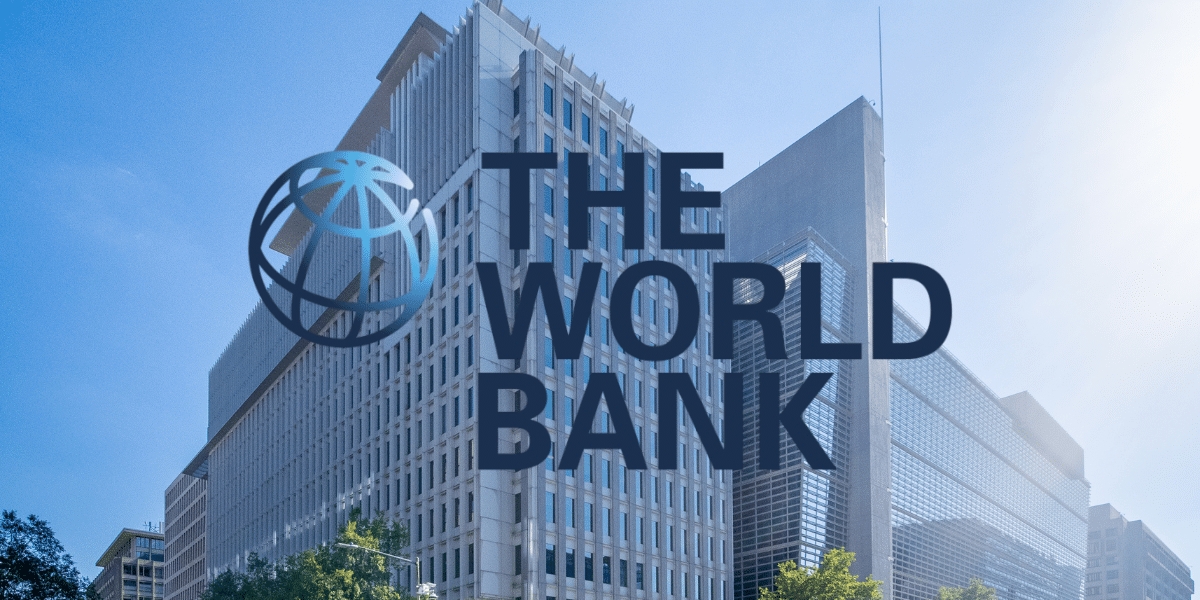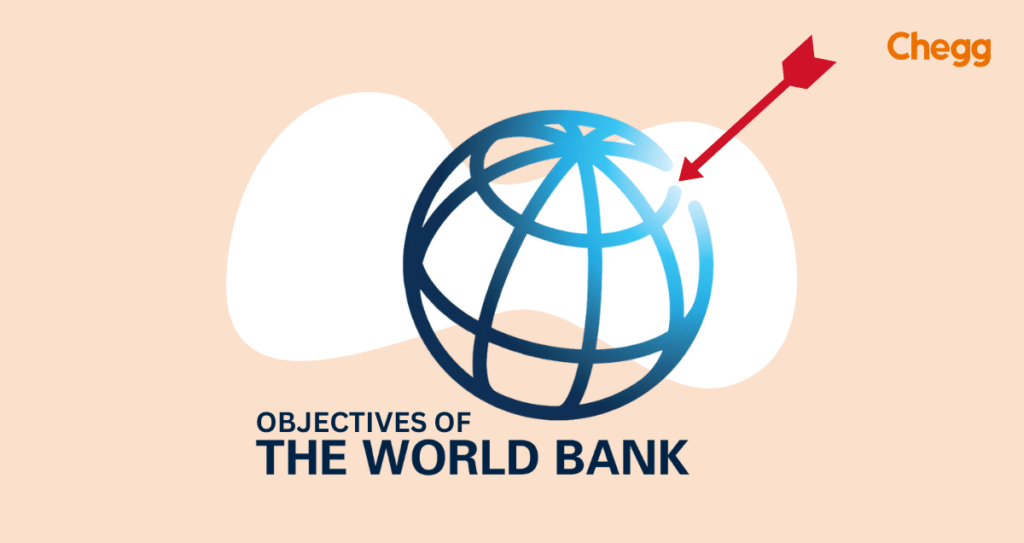
Quick Summary
Table of Contents
The objectives of World Bank focus on reducing poverty, promoting shared prosperity, and supporting sustainable development across the globe. Established in 1944 at the Bretton Woods Conference, the World Bank has evolved into five closely linked institutions that provide financial support, policy advice, and technical expertise to developing nations.
It plays a vital role in economic development by offering loans, grants, and knowledge-sharing initiatives that help countries strengthen infrastructure, improve healthcare and education, and promote inclusive growth. Its projects cover agriculture, energy, environment, and social protection, making it a cornerstone of global development.
Understanding the objectives of World Bank is essential for students, policymakers, and professionals, as it explains how the institution addresses poverty, inequality, climate change, and global financial stability.

The World Bank is an international financial institution that provides loans, grants, and technical assistance to developing countries for projects that aim to reduce poverty and promote economic development. Unlike commercial banks, the World Bank does not operate for profit; its primary goal is to support long-term financial stability, infrastructure growth, and social welfare across nations. It is part of the broader World Bank Group (WBG), which comprises five organizations working together to finance development and fight poverty.
The World Bank was established in 1944 at the Bretton Woods Conference in New Hampshire, USA. The conference brought together representatives from 44 countries to design a new international economic order after World War II. Alongside the International Monetary Fund (IMF), the World Bank was created to assist countries in rebuilding their war-torn economies and to stabilize the global financial system. Initially known as the International Bank for Reconstruction and Development (IBRD), its primary focus was reconstruction efforts in Europe and Japan.
Over the decades, the role of the World Bank has expanded significantly:
The World Bank Group (WBG) is not a single institution but a group of five closely related organizations, each serving a unique function in promoting development and reducing poverty worldwide. These institutions provide financial products, policy advice, capacity-building support, and dispute resolution mechanisms for countries and private investors.

The objectives of World Bank are centered around reducing poverty, fostering inclusive growth, and ensuring sustainable development across the globe. These goals guide its financial assistance, policy support, and technical expertise. Below are the primary objectives explained in detail:
The World Bank’s main objective is to reduce extreme poverty by offering financial and technical support through rural development, job creation, and essential services, helping millions achieve better living standards
The World Bank’s main objective is to reduce extreme poverty by offering financial and technical support through rural development, job creation, and essential services, helping millions achieve better living standards.
The World Bank funds renewable energy, climate resilience, and environmental protection projects to balance economic growth with sustainability, support nations in adapting to climate change, and foster greener development.
The World Bank’s primary goal is to invest in human capital by enhancing skills, healthcare, and safety nets and supporting education, health infrastructure, and welfare programs to ensure sustainable growth and long-term development.
The World Bank supports global trade integration by funding infrastructure like roads, ports, and power. Alongside IFC and MIGA, it fosters private investments and cross-border partnerships to drive economic growth.
The Bank plays a crucial role in reconstruction and recovery in post-war or disaster-hit regions. It assists in rebuilding infrastructure, stabilizing economies, and restoring livelihoods in fragile states.
The World Bank is also a knowledge hub, offering governments research, data, and policy guidance. It strengthens institutional capacity through training, technical expertise, and best practices.
The Bank’s strategies are aligned with the United Nations Sustainable Development Goals (SDGs), ensuring that its projects contribute to global development targets such as eradicating poverty, improving health, promoting gender equality, and ensuring clean energy access.
The functions of the World Bank extend beyond lending money. It serves as a global development partner by offering member countries financial resources, policy guidance, and technical expertise. The key functions include:
The World Bank provides loans, grants, and credits to developing and middle-income countries, funding infrastructure, health, education, and poverty programs. IBRD and IDA ensure that both creditworthy and low-income nations receive essential financial support for sustainable development.
The World Bank serves as a knowledge hub, providing governments with technical expertise, research, and advisory services, while supporting project design, implementation, and monitoring through global best practices, capacity-building programs, and practical evaluation for sustainable development.
The World Bank assists governments in framing and implementing economic policies and structural reforms. It encourages good governance, transparency, and institutional strengthening. Policy advice often focuses on fiscal stability, social protection, trade reforms, and sustainable economic growth.
Through the International Finance Corporation (IFC) and MIGA, the World Bank supports private sector initiatives. It provides investment guarantees, risk insurance, and funding for private enterprises in developing countries.
The objectives of World Bank are not just goals on paper; they have a real and lasting impact on economies, societies, and global development. Their importance can be understood at three levels:
Since its inception in 1944, the World Bank has played a transformative role in financing and supporting development projects worldwide. Its achievements span infrastructure, healthcare, education, and climate action, demonstrating its importance as a global development partner.
While the World Bank has contributed significantly to global development, it has faced criticism and challenges. These issues highlight its complex role in balancing development goals with economic, social, and political realities.
India has been one of the largest beneficiaries of World Bank assistance, receiving funding, technical expertise, and policy guidance for development across multiple sectors. The Bank’s support has been instrumental in India’s efforts to reduce poverty, improve infrastructure, and promote sustainable growth.
The World Bank is reshaping its role to address 21st-century challenges. Instead of limiting itself to traditional loans and infrastructure projects, it now acts as a global partner for resilience, sustainability, and digital transformation. Its latest initiatives and goals can be seen in four key areas:
The Bank’s vision for 2030 is anchored in two core goals:
The World Bank is now recognized as the largest multilateral source of climate finance. Recent steps include:
In response to COVID-19, the Bank mobilized $150+ billion to support over 100 countries. Current recovery efforts focus on:
Recognizing technology as the new driver of growth, the World Bank is:
The World Bank’s future roadmap is clear: fight poverty, enable shared prosperity, finance climate solutions, build resilience against crises, and empower nations with digital tools for sustainable growth.
The World Bank has grown from its original mission of post-war reconstruction to become a central player in global economic development. Its objectives, poverty reduction, shared prosperity, sustainable development, human capital investment, international trade facilitation, and crisis recovery, remain highly relevant in today’s interconnected world.
Despite criticisms of debt burdens, conditional lending, environmental impacts, and governance imbalances, the Bank continues adapting its policies and strengthening safeguards to address these concerns.
In an era marked by climate change, pandemics, digital transformation, and rising inequalities, the World Bank’s role is more critical than ever. Its challenge lies in balancing development goals with inclusivity and sustainability, ensuring that its initiatives truly serve the needs of both developing and developed nations.
In short, the World Bank remains a pillar of international cooperation, shaping pathways for equitable growth and a more resilient global economy.
Read More:-
Contributions from its 189 member countries fund the World Bank. Major funds come from capital investments, bond sales, and partner donations.
The World Bank aims to reduce poverty and promote sustainable development, while the IMF focuses on global financial stability, economic growth, and managing balance-of-payments issues.
The headquarters of the World Bank is located in Washington, D.C., United States. It serves as the central hub for its global operations and development initiatives.
The primary mission of the World Bank is to end extreme poverty by reducing the percentage of people living on less than $1.90 a day and to promote shared prosperity by fostering income growth among the bottom 40% in every country, ensuring sustainable development.
Yes, India is a member of the World Bank. It joined on July 11, 1944, shortly after the institution was established. India is one of the founding members and collaborates with the World Bank on various development initiatives to promote sustainable growth.
The World Bank’s five key goals are poverty reduction, sustainable economic development, shared prosperity, capacity building in developing nations, and fostering global partnerships. These goals guide its mission to improve living standards and support economic resilience worldwide.

Authored by, Muskan Gupta
Content Curator
Muskan believes learning should feel like an adventure, not a chore. With years of experience in content creation and strategy, she specializes in educational topics, online earning opportunities, and general knowledge. She enjoys sharing her insights through blogs and articles that inform and inspire her readers. When she’s not writing, you’ll likely find her hopping between bookstores and bakeries, always in search of her next favorite read or treat.
Editor's Recommendations
Chegg India does not ask for money to offer any opportunity with the company. We request you to be vigilant before sharing your personal and financial information with any third party. Beware of fraudulent activities claiming affiliation with our company and promising monetary rewards or benefits. Chegg India shall not be responsible for any losses resulting from such activities.
Chegg India does not ask for money to offer any opportunity with the company. We request you to be vigilant before sharing your personal and financial information with any third party. Beware of fraudulent activities claiming affiliation with our company and promising monetary rewards or benefits. Chegg India shall not be responsible for any losses resulting from such activities.